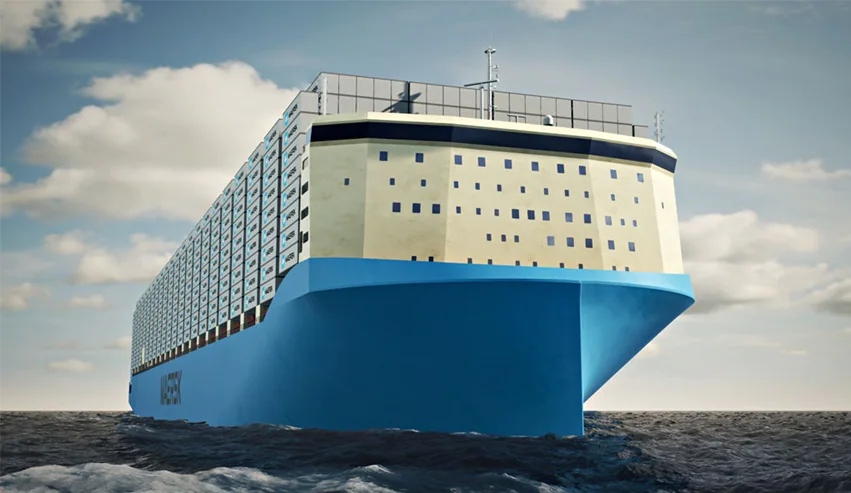Maersk plans to achieve net zero greenhouse gas emissions in 2040, one decade ahead of its initial 2050 ambition. 2030 targets are to ensure significant emissions reductions in this decade. The targets cover all direct and indirect emissions across the entire company.
‘As a global provider of end-to-end logistics services across all transport modes, it is a strategic imperative for Maersk to extend our net zero ambition to the total footprint of the business,’ says Maersk CEO Soren Skou. ‘The science is clear, we must act now to deliver significant progress in this decade.’
2030 targets
Tangible near-term targets for 2030 are set to ensure significant progress on curbing direct Maersk emissions already in this decade. These include a fifty per cent reduction in emissions per transported container in the Maersk ocean fleet and a seventy per cent reduction in absolute emissions from fully controlled terminals. Depending on growth in the ocean business, this will lead to absolute emissions reductions between 35 and fifty per cent from a 2020 baseline.
Henriette Hallberg Thygesen, CEO of Fleet & Strategic Brands at Maersk: ‘Our updated targets and accelerated timelines reflect a very challenging, yet viable pathway to net zero, which is driven by advances in technology and solutions. What is needed is a rapid scale-up, which we will strive to achieve in close collaboration with customers and suppliers across the entire supply chain.’
As recommended by the Science Based Targets initiative (SBTi), over the decade Maersk will go above and beyond the 1.5°C-aligned targets and invest in building a portfolio of natural climate solutions that will result in around five million tonnes of CO2 savings per year by 2030.
Also among the 2030 targets are to use green fuels for its vessels for 25 per cent of all cargo transported and Sustainable Aviation Fuels for thirty per cent of the cargo transported by air. In 2024, Maersk will see a total of eight methanol-powered container ships delivered, followed by another four a year later.
Also read: Maersk orders another four methanol-powered container ships
Tackling indirect emissions
Covering indirect emissions means the targets also address emissions from for example inland transport services and vessel building, which are provided by third party suppliers. Tackling this challenge will require extensive data insights and close collaboration with local and regional suppliers of products and services across the Maersk business footprint.
Maersk seeks to ensure ninety per cent of contract logistics (warehouses and depots) and its cold chain will be “green” by 2030. Green here means by using fuels or energy that have low or very low greenhouse gas emissions on a life cycle basis. The targets for inland transportation will be set during 2022.
Picture: With the accommodation at the bow, the new methanol-powered container ships look distinctly different from conventional container ships.
Also read: Maersk eyes air lubrication for methanol-fuelled container ships








